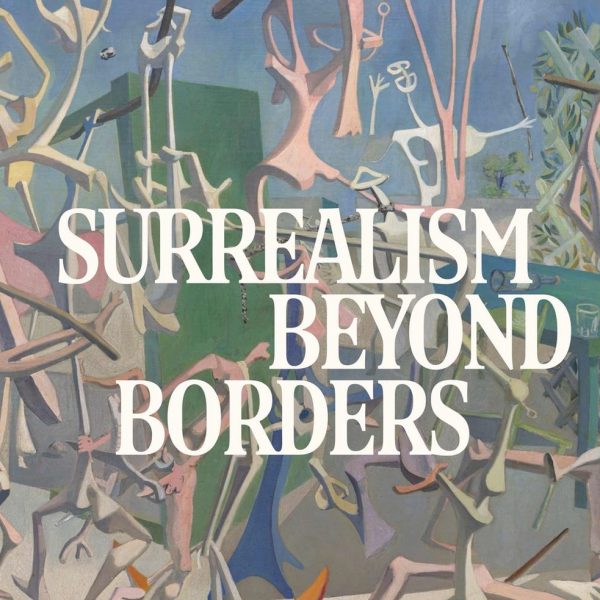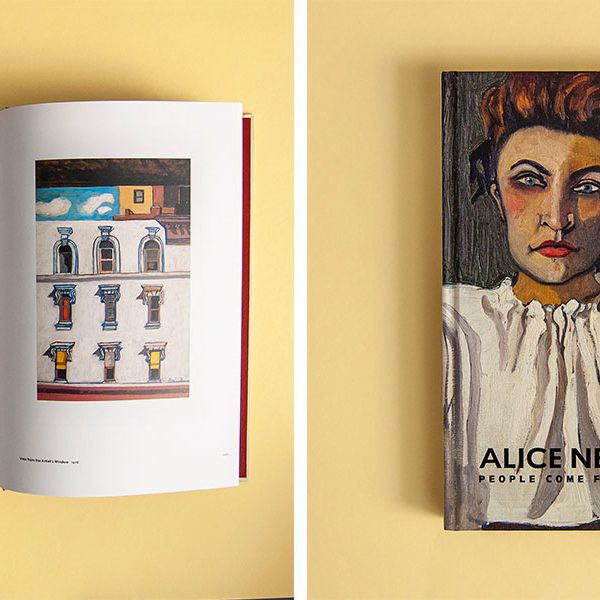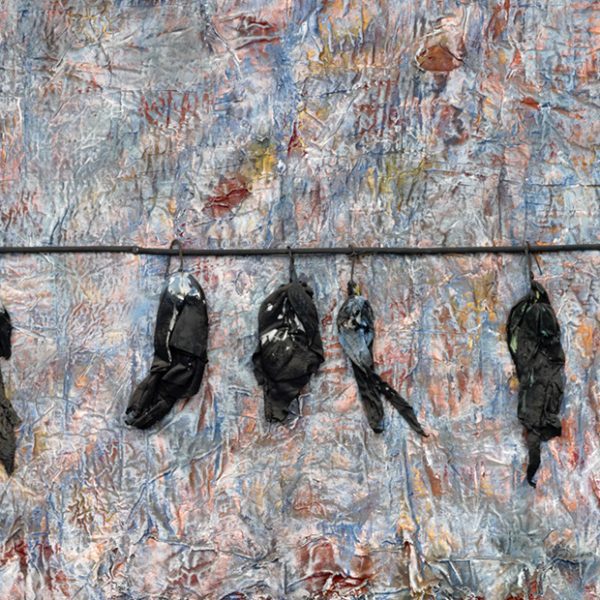Mastery of Imagination—Sultans of Deccan India with Navina Najat Haidar
We’re delighted to share a post from the blog over at The Metropolitan Museum of Art – Rachel High, in the editorial department there, has interviewed Navina Najat Haidar, co-editor of their new book (and co-curator of the exhibition) Sultans of Deccan India, 1500 – 1700: Opulence and Fantasy (distributed by Yale University Press).
Rachel High —
In the sixteenth and seventeenth centuries, the Deccan Plateau of south-central India was a nexus of international trade and home to a series of important, highly cultured Muslim kingdoms. With cultural connections to Iran, Turkey, eastern Africa, and Europe, Deccani art is particularly celebrated for its unmistakable, otherworldly character. This beautifully illustrated catalogue discusses two hundred of the finest Deccan works and includes extraordinary new photographs of the lush landscapes of the Deccan lands.
Sultans of Deccan India, 1500–1700: Opulence and Fantasy, which accompanies the exhibition on view through July 26, is the most comprehensive examination to date of this fascinating and remote world. I spoke with Navina Najat Haidar, who partnered with Marika Sardar as co-curator of the exhibition and co-editor of the catalogue, about the book, her interest in the Deccan, and the imaginative artworks of these extraordinary kingdoms.
Rachel High: How did you become interested in this topic? Was there a piece that captivated you or sparked your interest?
Navina Najat Haidar: I inherited the project from the former Patti Cadby Birch Curator in Charge of theDepartment of Islamic Art, Daniel Walker. He initiated some work on the Deccan, and then I took the project forward. That is how I came to work on this topic, and yes, the objects completely captivated me.


A series of illustrations of the Shahnama epic. Top, left to right: Abu’l Qasim Firdausi (935–1020). “Suhrab Slain by Rustam,” Folio from a Shahnama (Book of Kings) of Firdausi, ca. 1610. India, Deccan, Bijapur. Islamic. Ink, opaque watercolor, and gold on paper; page: 8 x 4 13/16 in. (20.3 x 12.2 cm) Painting: 2 5/8 x 3 1/8 in. (6.7 x 8 cm). The Metropolitan Museum of Art, New York, Gift of Gift of Jeffrey Kossak, The Kronos Collections, 1985 (1985.404.1); Abu’l Qasim Firdausi (935–1020). “The Death of Farud,” Folio from a Shahnama (Book of Kings) of Firdausi, ca. 1610. India, Deccan, Bijapur. Islamic. Ink, opaque watercolor, and gold on paper; page: 8 x 4 7/8 in. (20.3 x 12.4 cm) Painting: 3 5/16 x 3 9/16 in. (8.4 x 9.1 cm). The Metropolitan Museum of Art, New York, Gift of Steven Kossak, The Kronos Collections, 1985 (1985.405.1). Bottom, left to right: Abu’l Qasim Firdausi (935–1020). “Rescue of Bizhan by Piran,” Folio from a Shahnama (Book of Kings) of Firdausi, ca. 1610. India, Deccan, Bijapur. Islamic. Ink, opaque watercolor, and gold on paper; Page: 7 7/8 x 4 3/4 in. (20 x 12.1 cm); Painting: 5 3/16 x 2 3/4 in. (13.2 x 7 cm). The Metropolitan Museum of Art, New York, Gift of Wendy Findlay, 1983 (1983.354.1); Abu’l Qasim Firdausi (935–1020). “Kai Khusrau Crosses the Sea,” Folio from a Shahnama (Book of Kings) of Firdausi, ca. 1610. India, Deccan, Bijapur. Islamic. Ink, opaque watercolor, and gold on paper; Page: 8 x 4 7/8 in. (20.3 x 12.4 cm); Painting: 5 3/8 x 2 3/4 in. (13.6 x 7 cm). The Metropolitan Museum of Art, New York, Gift of Wendy Findlay, 1982 (1982.476.3)
Rachel High: In your catalogue essay you discuss the differences between the better-known Mughal artistic traditions and the art of the Deccani courts. Could you briefly describe a few of the differences that you highlighted?
Navina Najat Haidar: Mughal art is generally committed to naturalism, to looking at the world and idealizing it, but also capturing it with brilliant precision. Mughal paintings are quite often great historical documents of their times. If you read them in the right way, you often get more information out of them than just a text. However, Deccani art is more imaginative. It has the same great finesse and technical perfection of Mughal art, especially in the paintings, but it has a freedom of imagination and expression, and it slightly deviates from reality into a sense of fantasy. That is, I think, one of the profound differences between Deccan and Mughal art, insofar as one can generalize about these things.


Top: Emaciated Horse and Rider, ca. 1625. India, Deccan, Bijapur. Islamic. Ink, opaque watercolor, and gold on paper; marbleized paper; 4 x 6 3/8 in. (10.2 x 16.2 cm). The Metropolitan Museum of Art, New York, Rogers Fund, 1944 (44.154). Bottom: Payag (Indian, active ca. 1591–1658) and Mir ‘Ali Haravi (d. ca. 1550). “Shah Jahan on Horseback,” Folio from the Shah Jahan Album, verso: ca. 1630; recto: ca. 1530–50. India. Islamic. Ink, opaque watercolor, and gold on paper; H. 15 5/16 in. (38.9 cm) W. 10 1/8 in. (25.7 cm). The Metropolitan Museum of Art, New York, Purchase, Rogers Fund and The Kevorkian Foundation Gift, 1955 (55.121.10.21)
Compare the naturalistic Mughal portrayal of a horse and rider (top) to the more fantastical Deccan portrayal (bottom). Notice the use of water marbling to abstractly denote the horse’s markings on the Deccan example.
Rachel High: Onsite photographs of architecture and monuments on the Deccan Plateau are a major component of this gorgeous book. Could you could talk about some of the important motifs that were used by Deccan architects?
Navina Najat Haidar: There is a great unity of style and expression that goes from tiny objects of the Deccan to great big monuments, and one wonders how this stylistic unity across media came about. This is actually common in Islamic art. For example, the famous arabesque motif is often found in the illumination manuscripts as a decoration on the borders, but the same design can be found on stuccowork and plaster work on buildings. Calligraphy is another area in Islamic art where one finds similar styles across media. Specific to the Deccan, one will find that certain sorts of figural reliefs on the forts, which had a talismanic and protective function, are often also found in the form of bronze animal statues. There are also stranger things, like great medallions hanging on chains, depictions of whole objects carved into the plaster work, and all kinds of patterns that you see in architecture, but also carved on objects or incised in metalwork. It’s quite fascinating to look across media to see those similarities.


Examples of Deccan architecture depicted in the catalogue. Photographs by Antonio Martinelli
Rachel High: Deccani art is often described as otherworldly. The catalogue discusses how that definition, while descriptive, can be problematic. How do you hope this book will change or enrich the reader’s perception of these objects?
Navina Najat Haidar: I think the description of otherworldly is absolutely true and correct in certain instances because the imagination of the Deccani artists and the kind of expressions they fostered reflected a nonliteral vision of the world around them. It was fantastical, metaphorical, and stylized in a way that was original and slightly abstracted from what you would see with your eyes, and that’s some of the magic of the Deccan. At the same time, that doesn’t mean that they were painting however they liked; they came from a very formal tradition of Indo-Persian technical training.
What I think will come through with this book is the achievement of absolute technical mastery while still honoring and exploring the idea of fantasy and otherworldliness. The fact that the two exist without compromise is one of the fascinating things about the Deccan.


























